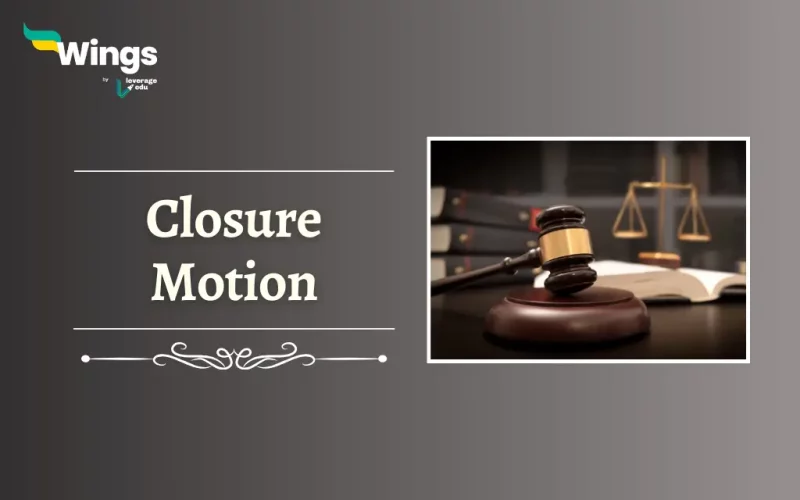A Closure Motion is a device of parliamentary proceeding wherein a motion is moved by a member to cut short the debate on a matter before the House. If the motion gets the approval by the House, the debate is stopped immediately and the matter is put to vote. Furthermore, a Closure Motion is introduced by a member who feels that sufficient discussion has taken place on the issue at hand and that it is time to move towards a decision. Therefore, the Closure Motion aims to speed up the decision-making process within the legislative body. This blog also includes the Types of Closure Motion and an example of the use of the motion.
Types of Closure Motion
Table of Contents
There are four Types of Closure Motion:
- Simple Closure: As the name suggests, it is a closure wherein a member moves that the ‘matter having been sufficiently discussed be now put to vote.”
- Closure by Compartments: In this case, the clauses of a bill or a lengthy resolution are grouped into parts before the commencement of the debate.
- The Speaker, in consultation with the House, divides the bill into specific sections or compartments.
- Moreover, the debate covers the part as a whole and the entire part is put to vote.
- This is usually helpful for lengthy bills or resolutions.
- Kangaroo Closure: In this type of Closure Motion, only important clauses are taken up for debate and voting and the intervening clauses are skipped over and taken as passed.
- This type is used sparingly due to its possibility to skip detailed scrutiny of particular parts of the legislation.
- Guillotine Closure: When the undiscussed clauses of a bill or a resolution are also put to vote along with the discussed ones due to want of time (as the time allotted for the discussion is over).
- Once the designated time expires, all remaining clauses, regardless of whether they were discussed or not, are put to vote together.
- Moreover, this Closure Motion is used when time restrictions become a necessary factor in passing important legislation.
Also Read: What is Adjournment Motion?
Example of Motion
Imagine a scenario where the Lok Sabha is debating a controversial economic reform bill.
- After days of extensive discussion, a member from the ruling party feels sufficient debate has occurred.
- They can move a simple closure motion, urging the Speaker to put the bill to vote.
- If the motion is passed by a majority in the House, the debate ends, and the members proceed to vote on the entire bill.
Related Blogs
Lastly, we hope you liked our blog and gained an understanding of Closure Motion. Moreover, you may even read more blogs and empower yourself with knowledge regarding Civics and Polity!
 One app for all your study abroad needs
One app for all your study abroad needs













